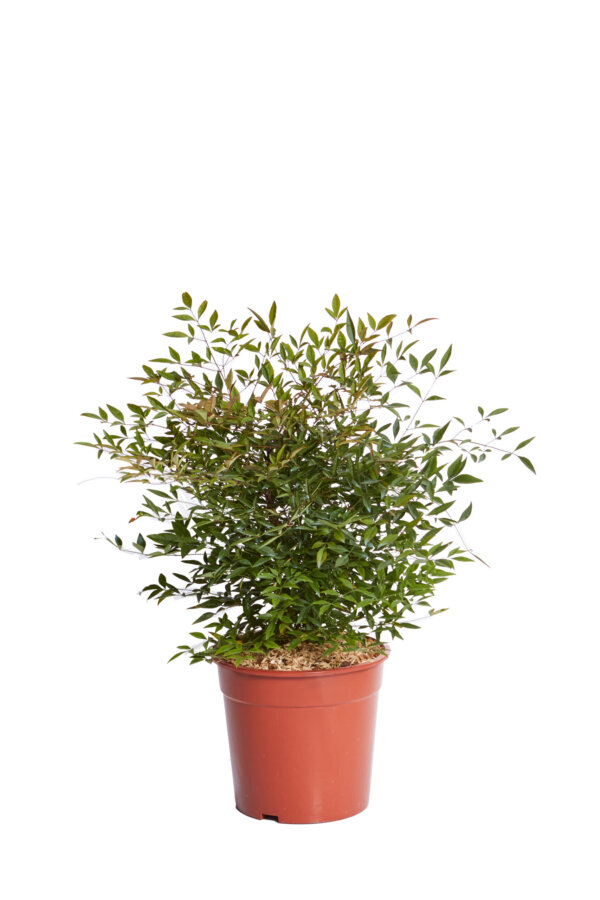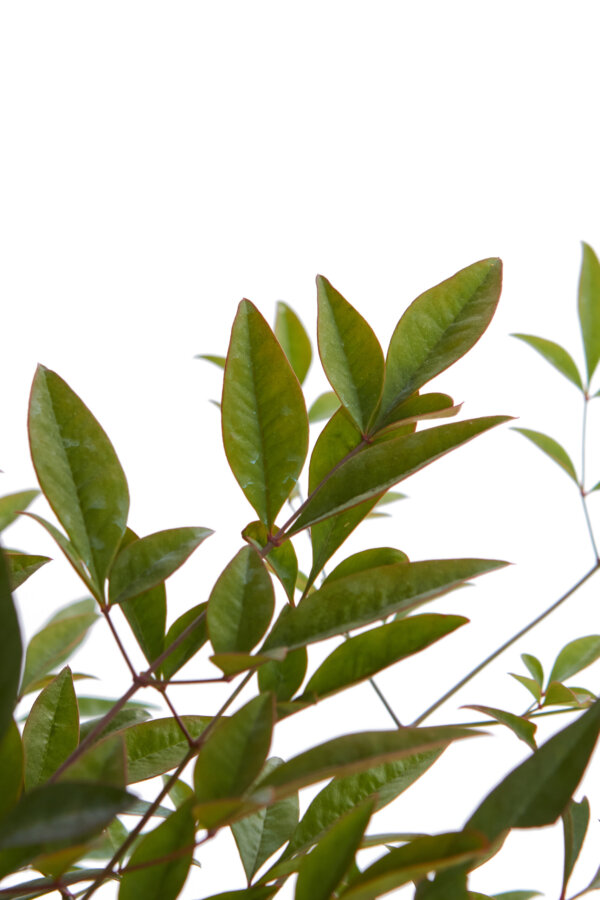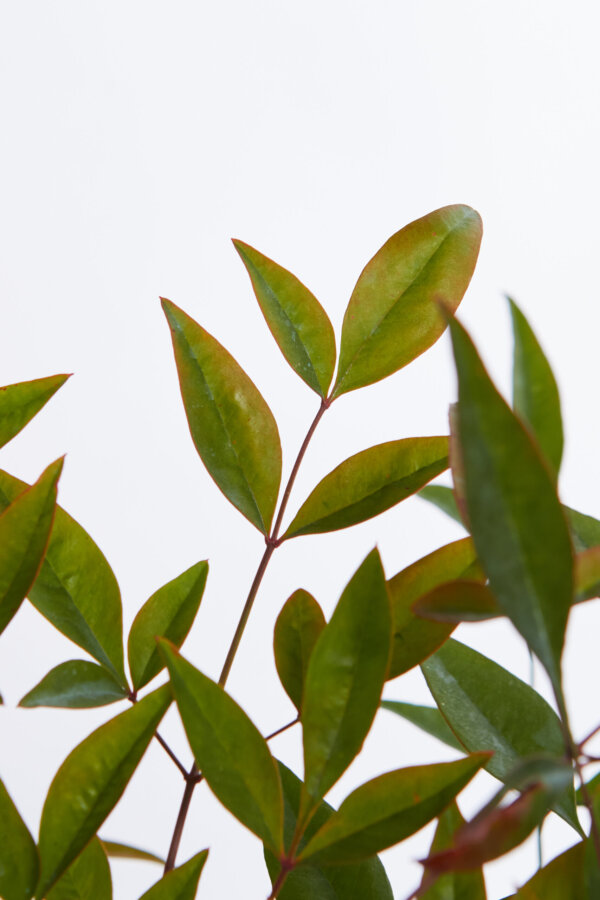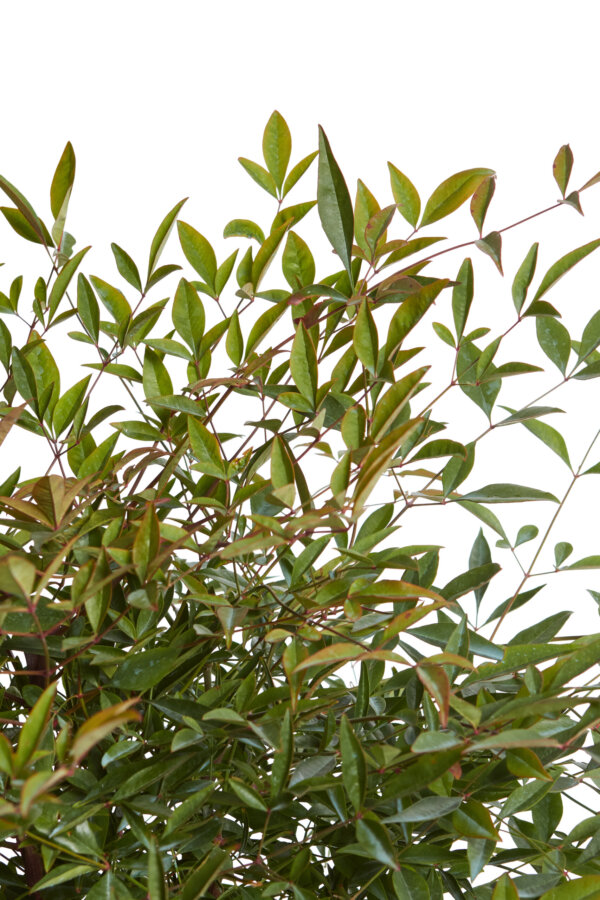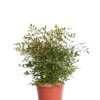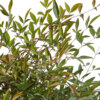NANDINA DOMESTICA
Nandina domestica, commonly known as sacred bamboo, is an evergreen shrub of Asian origin, appreciated for centuries for the elegance of its shape and the chromatic evolution of its foliage, which makes it a constant ornamental presence in every season. Despite its common name, it has no botanical relationship with bamboo, even if it vaguely resembles its appearance due to the lightness and arrangement of its foliage. The plant has thin and erect stems, little branched at the base, which rise in an orderly and vertical manner. The leaves, composite and light, emerge bronze or reddish in spring, become glossy green in summer and turn red, orange or purple again with the arrival of autumn, maintaining the color even in the winter months. This extraordinary chromatic variability makes Nandina domestica one of the most decorative species among foliage shrubs. In summer, the plant produces panicles of small white flowers, sometimes slightly scented, followed ⤔ if not pruned ⤔ by the formation of spherical berries of a bright red that persist on the plant until late winter. These fruits, although ornamental, are not edible and can be toxic to some pets. Nandina domestica can reach heights of between 1.5 and 2 meters, with a proportional width, and develops a columnar and light shape, which fits well in both modern contexts and more traditional gardens. It is a resistant plant, suitable for both full sun and partial shade, and adapts well to different types of soil, as long as they are well drained. Once well established, it tolerates drought and moderate cold, making it a versatile choice even for those looking for a low-maintenance plant. Thanks to its complete decorative cycle ⤔ foliage, flowers and fruit ⤔ Nandina domestica is ideal as a single specimen, in groups, for mixed hedges or even in pots, where it can offer an exotic and refined touch throughout the year.
